Einkorn Sourdough Starter
This Einkorn sourdough starter recipe gives you step-by-step instructions to create your own sourdough starter. You’ll also learn how to keep it alive so you can make your family’s sourdough bread for years to come!
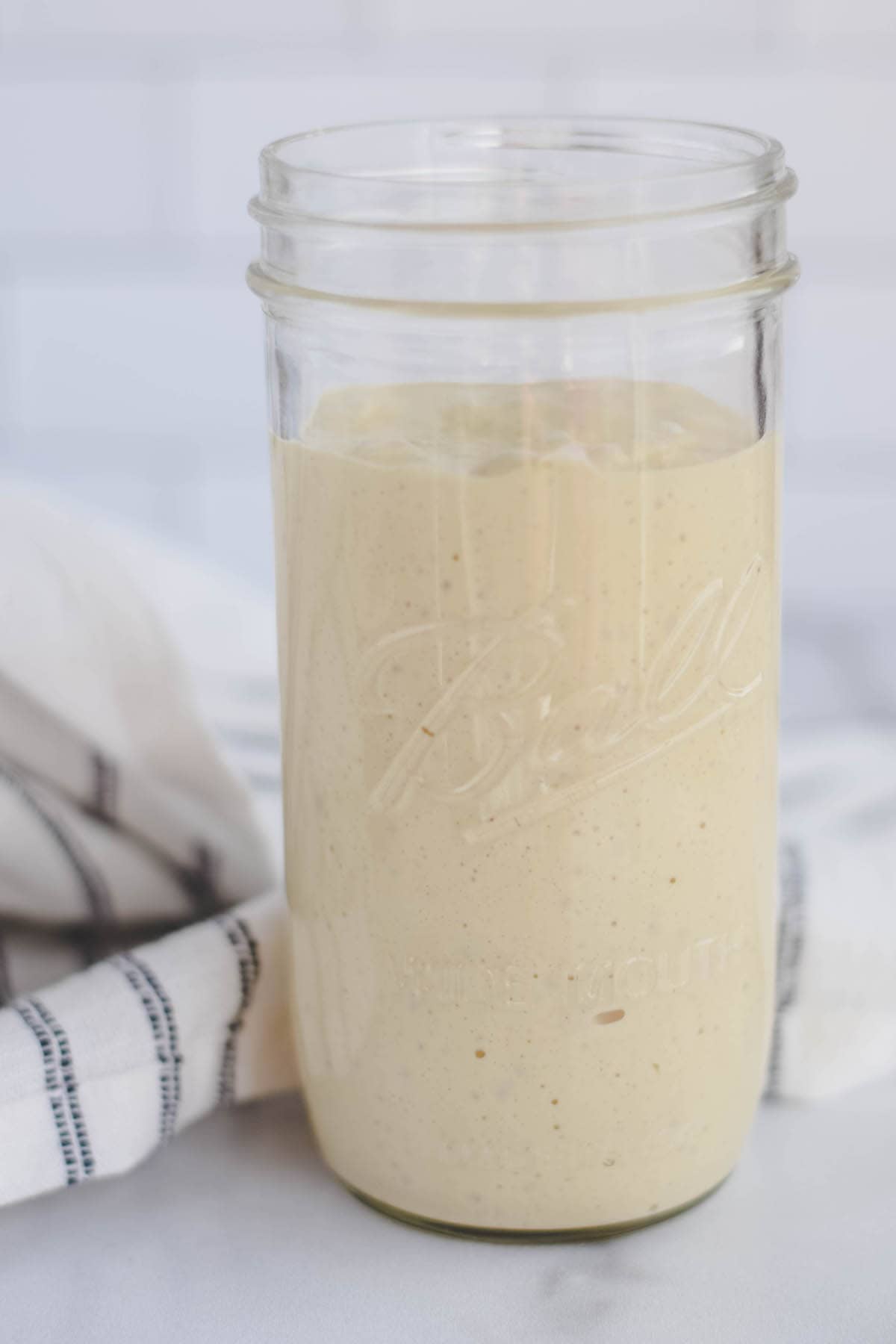
How to make an einkorn sourdough starter
Over the years, we have discovered a sensitivity to many ingredients in our home. Einkorn is one of the ancient grains that all of us can tolerate without flare-ups and various symptoms being triggered.
Initially my sourdough starter was used with other grains and I swapped them out to use only einkorn.
Of course, you can use other flours for creating a sourdough starter. But, this is a grain that works best for my entire family and easily digested by all of us.
Einkorn sourdough starter is a fermented culture of all purpose einkorn flour and water. You can use your own starter to make dough rise similar to the way active dry yeast does. Just remember, the rising time for sourdough starter is a little bit different than dry yeast.
The starter is mixed with fresh flour, water, salt, and sometimes butter to create bread dough (depending on the recipe). Using an active starter provides the rise you need to shape sticky dough into loaves, buns, or used in other sourdough recipes.
There is no one sourdough “recipe” for everyone to use. You should treat any recipe as a starting point for making the sourdough breads you and your family love. Over time, you will become more comfortable and confident in working with sourdough.

Benefits of einkorn sourdough starter
If you are just being introduced to the many benefits of einkorn wheat flour, you should know that it is far from something new. As a matter of fact, einkorn is called the original wheat. Some people say it is the most ancient grain on earth.
Einkorn wheat originated in the Middle East and has been grown all over the world for centuries. There is no doubt that as einkorn is an ancient wheat, cooks used it for thousands of years to make their own sourdough starters and in turn to make their breads.
At present, einkorn flour is popular because it has a higher nutritional value than modern wheat varieties. This type of flour contains less gluten and more protein, vitamins, and minerals.
Not only does einkorn wheat flour contain less gluten than regular flour, but the gluten contained in einkorn is completely different than that in regular wheat. Most people with gluten sensitivities claim that it does not cause them problems like they experience with conventional wheat.
You can purchase whole grain einkorn flour or all-purpose einkorn flour. The choice would depend on what you are making and the type of flour you prefer. Most people purchase both to use depending on their recipe.
It also tastes delicious when baked into healthy bread or used in desserts such as pies. In fact, many pastry chefs have been using this type of flour to create much healthier versions of their recipes!

Benefits of sourdough
An active sourdough starter is made by capturing an active colony of wild yeasts from the air. It used to be easier to capture these wild yeasts. This is because the chemicals used to clean in so many homes today kill both good and bad microorganisms.
As a fermented food, there are many health benefits to sourdough. It is said to improve gut health, reduce elevated blood sugars, and lower the risk of heart disease just to name a few.
Sourdough is an ancient form of grain fermentation. We know that it was used at least as far back as 1500 BC in ancient Egypt and remained the traditional process to leaven bread until baker’s yeast was introduced around two hundred years ago.
Traditional sourdough uses “wild yeast” with lactic acid bacteria that are naturally found in flour to produce leaven bread. Because of the health benefits of true sourdough bread products, it continues to be popular among people who enjoy food that nourishes the body.
More good for you benefits
- It’s easier to digest – Sourdough bread helps your digestion system by the type of bacteria it brings to your gut.
- It helps regulate blood sugars -The fermenting process minimizes starches. This in turn helps to manage blood sugar levels.
- It decreases gluten sensitivity – Gluten gets broken down in fermentation making it easier for people with gluten sensitivity problems to digest sourdough products. If you’re using an einkorn sourdough starter recipe, this will give you even better results!
- It contains more good acids and fewer bad acids -Lactobacillus is found in larger quantities in sourdough and there is less phytic acid. This is important because phytic acids bind to minerals keeping your body from absorbing them and benefiting from them.
- It maintains a healthy yeast level – Sourdough yeast levels are lower than those in active dry yeast. This can help to keep your body from experiencing yeast overgrowth.
- It has a proven track record of effectiveness – Sourdough has been used by man for thousands of years to create breads and other sourdough products.
- It is naturally made – Acetic acid, which helps to naturally preserve bread, is found in sourdough. So, it naturally preserves itself without added ingredients allowing for longer storage than other freshly made breads
- It has better nutritional value – While whole grain breads made with conventional yeast have a good amount of minerals, phytic acids keep most of those from being used by the digestive system. Sourdough lowers the bread’s pH level which lowers the overall phytate levels. Recent studies have shown that sourdough fermentation reduces phytate by 24-50% over that of modern industrial yeast fermentation.
- It’s robust flavor – Sourdough products made with a mature starter is impressive with deep, robust flavor.
Don’t be intimidated by making your own Einkorn sourdough starter. It may seem like a complicated process, but with a little experience you’ll see it’s not hard at all.
I’ll give you some things to keep in mind and the step by step process to making an Einkorn sourdough starter.
🥖Helpful Resources
I’ve found that testing out various recipes and resources while working with einkorn and sourdough, there are two that have become my favorite. And I would recommend them to anyone who would love to learn more!
This “Einkorn” cookbook covers all of the helpful information when working with einkorn flour.
And this “Wild Bread” cookbook has interesting bread recipes for a variety of flours.
Tips and tricks for einkorn sourdough starter
There is no one sourdough “recipe” for everyone to use. You should treat any recipe as a starting point for making the sourdough breads you and your family love. This is true because of some key things.
1. A sourdough starter is alive. This state of “aliveness” varies so your starter is more alive sometimes than at others. Because of this, it won’t behave the same every time you feed and use it. This also makes it uniquely yours, it’s not like anyone else’s sourdough starter.
2. Temperature is key in the process of making a sourdough starter just as it is in making bread. The temperature of your home may be warmer or cooler than someone else’s home. Warmer temperatures make yeasts react faster just as cooler temperatures slow them down.
3. Just as the type of flour you use in your einkorn sourdough bread recipe matters, so does the water you use. If you are on a city water supply or any water supply that uses chlorine or fluoride in their water treatment, you should use filtered water or bottled water instead. These elements will change the action and taste of your sourdough starter.
Want to save this?
4. The age of your starter directly affects the flavor of it. An older starter is said to be “mature” and has a more robust flavor. If your ratio of starter to flour is high, your sourdough bread will have a stronger flavor. If a milder sourdough flavor is preferred, it will be necessary to use less of the mature starter. Replace the difference in the amount of starter with warm water.
5. Not everyone uses the same brand of flour or kind of flour. The flour type and brand type change any recipe. The texture, absorption rate of liquid, flavor, and time required for proving dough will be altered if you use a different flour than called for in the recipe. But you can still have a healthy starter even if you choose not to use einkorn flour.
6. It will take close to 7 days for your sourdough starter to begin to thrive and be ready to make bread.
In addition, it has taken me many attempts at getting the sourdough starter method down. It really isn’t complicated to do, but the first attempt at it over 10 years ago failed when I used the wrong flour and water ratio.
The second attempt was a few years later following this recipe from Jovial. It was a success, but became a little too much work for me to maintain during pregnancy and various complications.
So, I decided to simplify the method. My current method is much easier and does not require weighing anything. If you want a more precise recipe, I would highly recommend the one I just mentioned.
Feeding and storage of your starter
Feeding your active starter will keep it alive. It’s not as complicated as it sounds, and you’ll be so glad you learned how. Because you’ll have access to your own homemade sourdough goodies for uses in a variety of recipes.
1. After you have used your starter to make sourdough bread, you can place the remaining starter in the fridge to rest until you’re ready to use it again. Just take it out 1-2 days before you want to use it so that it can get to room temperature.
2. Don’t store your starter in a plastic or metal container. Both of these will impart a bad taste to the starter. Instead, use a glass jar with a loose fitting lid so that your starter can breathe. I like to use a tall mason jar or these jars are great too because they are wide enough for feeding the starter. Any glass container with a loose fitting lid or tea towel will work.
3. In the days before refrigeration, sourdough starter was stored in a cool, dark place. It was used more often than we would probably use it today so feeding it wasn’t an issue. They simply fed it every time they used it, which was usually daily. This is how I store my starter and it is used just about everyday for a variety of recipes besides just bread.
4. If you see a separation in your starter, don’t be alarmed. This is normal when starting out – it means that the starter is hungry and needs to be fed. You should still be able to see that it forms bubbles. When you feed it, everything will be just as it should be.
5. If you notice a grayish color on the top during the top during the feeding process, don’t be worried. This is normal and just scrape it off before feeding the starter.
6. For a truly whole wheat bread you can use whole wheat flour to make your Einkorn starter. Just remember to add extra water as whole wheat grain absorbs more liquid.
7. If you would like a rustic loaf, bake the sourdough bread in a cast iron dutch oven. If your recipe calls for separating the dough into two balls, skip this step and place the whole dough ball into the oiled pan. Bake for at least an hour before checking to see if it’s done.
8. To avoid causing a dry, crumbly loaf, knead and handle sourdough with hands moistened with water instead of floured hands or surface. You will need to moisten them again when the dough begins to stick to your hands. Fortunately, bread made with Einkorn flour needs little to no kneading.
9. Remember, bread made with sourdough starter requires a longer rise time than bread made with active dry yeast. Einkorn flour also does not rise the same as typical or modern flours because it is a weaker gluten.
One of the signs of a healthy sourdough starter are foamy action and/or bubbles. Something that I’ve noticed when working with einkorn flour in a starter is that it does not foam up as much as some other flours.
As long as you see bubbles like this image below, you know your starter is healthy and ready to use.
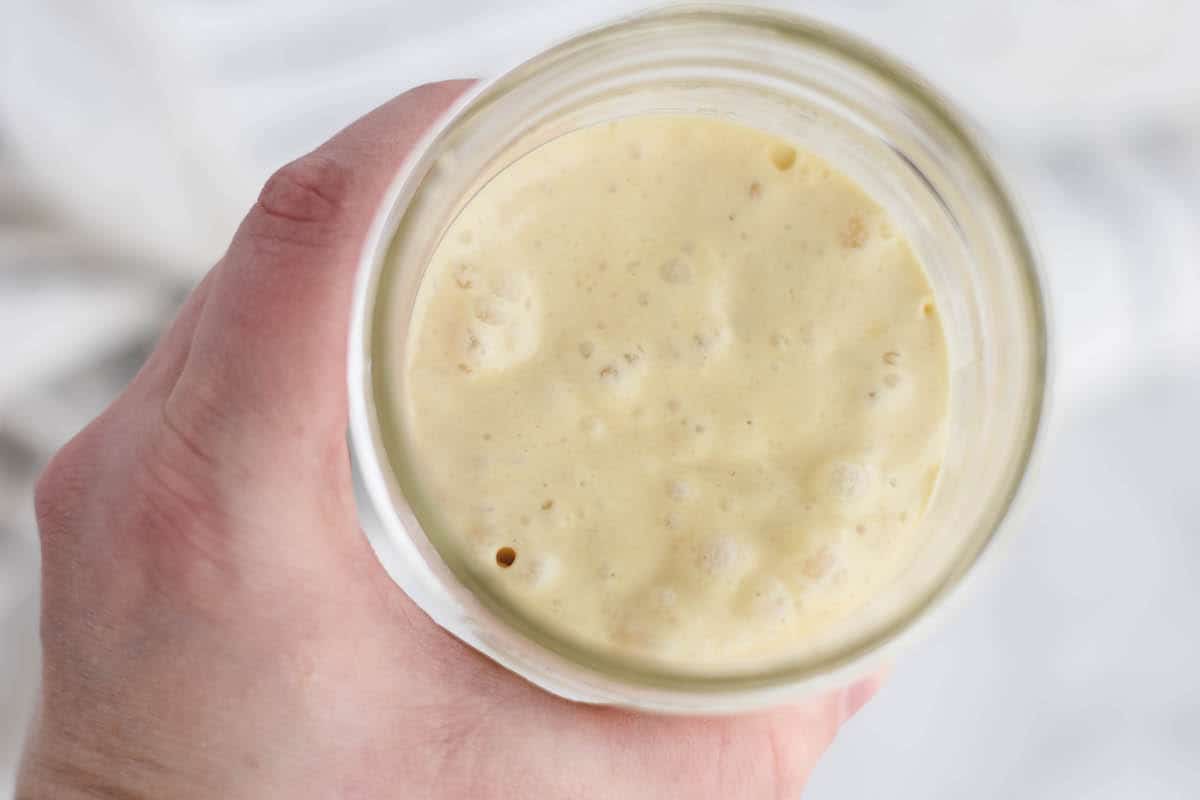
More favorite recipes
Here’s a couple of favorite fermented food recipes you will love!
Sourdough Stuffing with Sausage
Naturally Flavoring Water Kefir
FAQ (frequently asked questions)
Yes! Any type of glutenous flour works well for creating a sourdough starter. We prefer einkorn for various reasons as covered in the blog post. Any of these flours, such as spelt, einkorn, rye, and wheat, usually will work best. If using a different flour besides einkorn, the ratios may need to be adjusted to 1:1, so 1 cup of flour with 1 cup of water would work best for those flours.
Einkorn has a very weak gluten so it does not rise the same as other flours would. It would not rise as high as modern flours and does not need to be kneaded as long as others would. It is also better to underproof the bread than have it deflate by expecting it to double in size during rise time.
Yes, you could feed your sourdough starter (if it has been created from wheat flour) with a variety of flours interchangeably. I would stay with wheat flours and prefer to find ancient varieties or clean organic wheats. Also, consider that einkorn absorbs less water so feeding other flours will need more water.
want more recipes?
Check out the recipe index where you can discover more homemade recipes from my homestead!
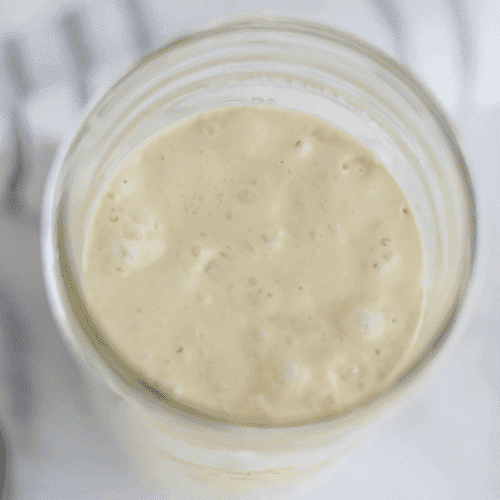
Einkorn Sourdough Starter Recipe
Equipment
Ingredients
- einkorn all purpose flour
- filtered water
Instructions
Day 1
- Combine 1 cup all purpose einkorn flour with 3/4 cup filtered water in a tall, glass mason jar or glass bowl.
- Cover the jar with any loose fiber covering such as tea towel, cheese cloth works well too. The starter must be able to breathe. Plastic wrap loosely fitted is used successfully by some bakers.
- Let the starter sit at room temperature for 24 hours. It can sit on the counter, just be sure to keep it out of direct sunlight. It could also be kept in a pantry, cabinet, or wrapped in a towel to prevent exposure to light.
Days 2-5
- On the second day, stir the starter and discard 1/2 of it, feed your starter one cup of flour, 3/4 cup filtered water, and combine well. Repeat this process for days 3-5.
- At this point, the starter is just water and flour, so it needs to be discarded and fed. I know that it feels wasteful, but removing half of the starter ensures that the right amount of flour and water is feeding the growing colony of beneficial yeast.
Days 6-7
- On days 6-7 repeat the previous steps but do this every 12 hours instead of 24 hours.
- After day 7, your starter should be able to bake in a variety of recipes. Check for signs that the starter is alive and ready for bread baking as highlighted below. The starter will get stronger over time with feeding and proper care.
Notes
- When you’re ready to make bread, set the starter out at room temperature before you want to use it. If you store it at room temperature instead of the refrigerator, skip this step of course.
- Feed the starter the day before you plan to use it for a recipe. Follow the specific recipe to determine how it wants the starter used/fed. My starter is used nearly daily so it is fed the night before I want to use it. I combine the starter with 3/4 cup water, 1 cup flour, and mix well. Cover it with your tea towel. If you keep your starter in a mason jar, you can just add the water and flour to the jar and combine well.
- If your starter is established and thriving you may see foaming action or bubbles. After feeding, bubbling action should be visible within 4 to 12 hours. If a sourdough starter is not bubbly, it may require more frequent feedings. I would suggest trying every 12 hours if it requires more feeding.
- When your starter is ready to make bread, pour the amount you need for your recipe and either refrigerate the remaining starter or store it in a cool, dark place as usual.

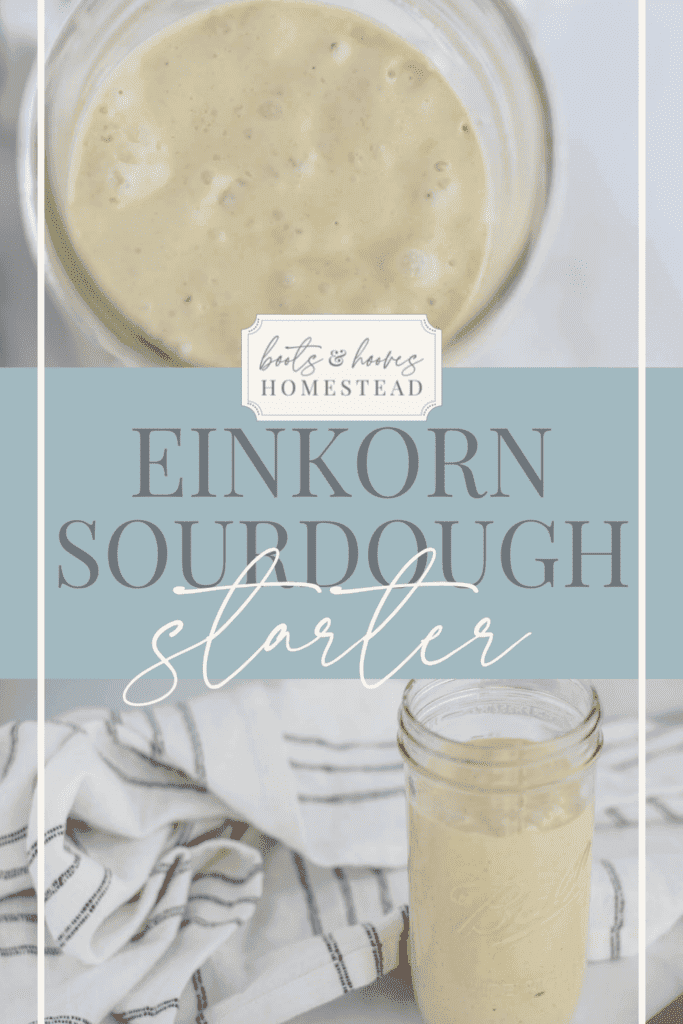
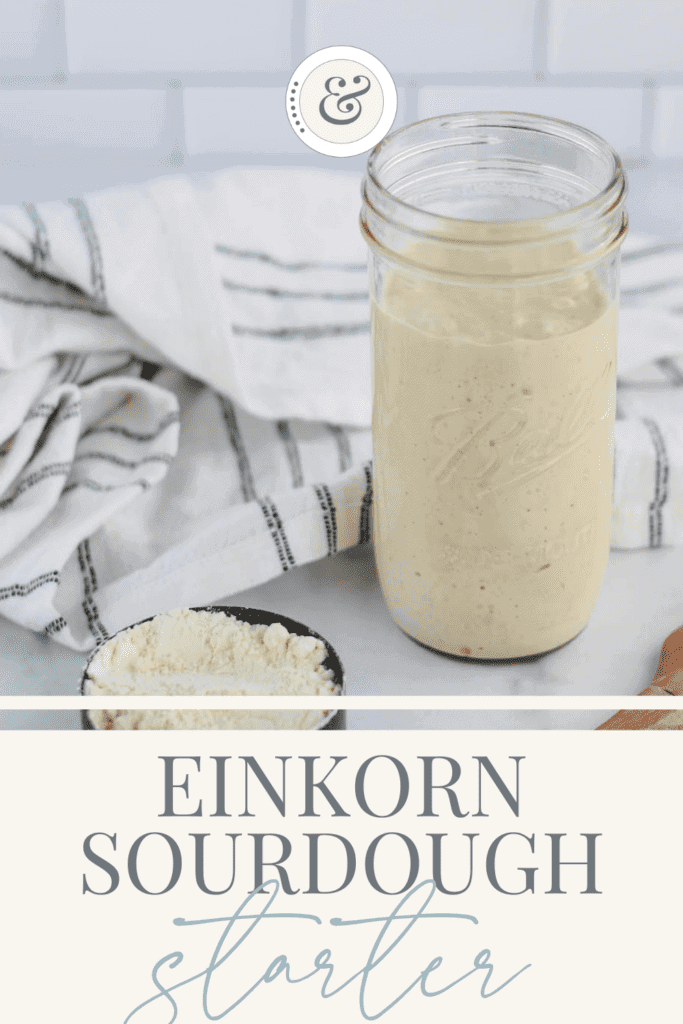




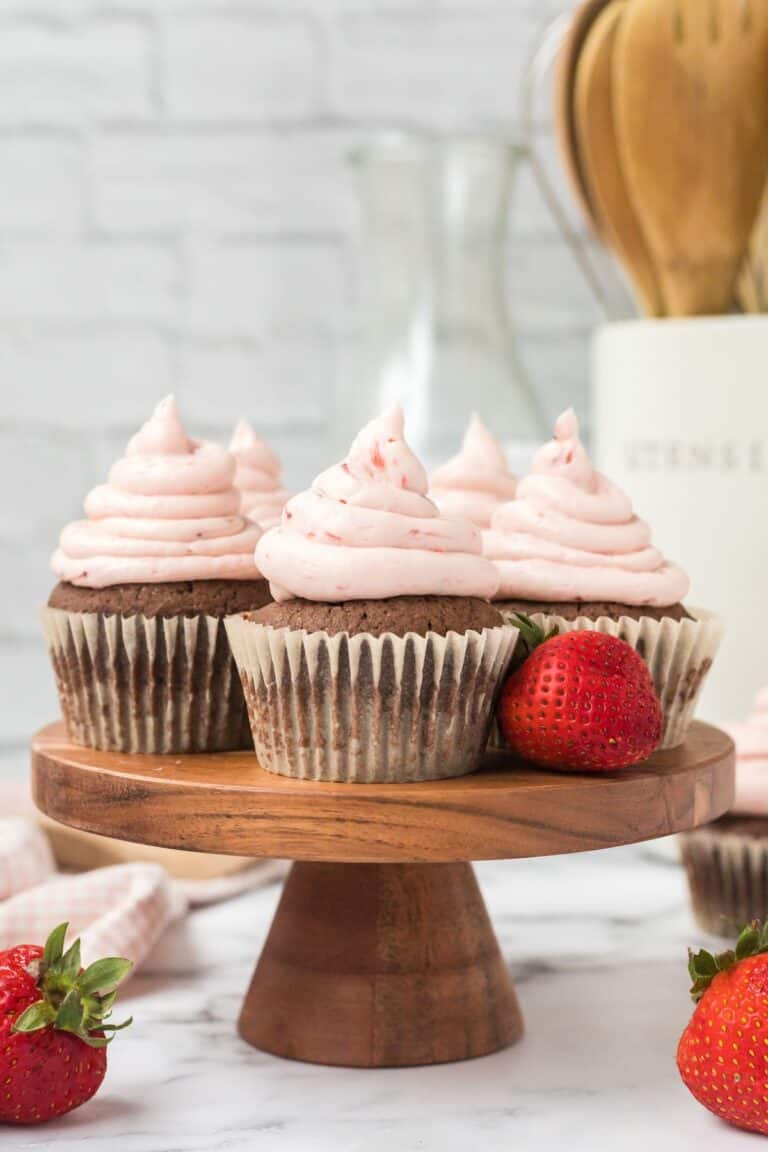

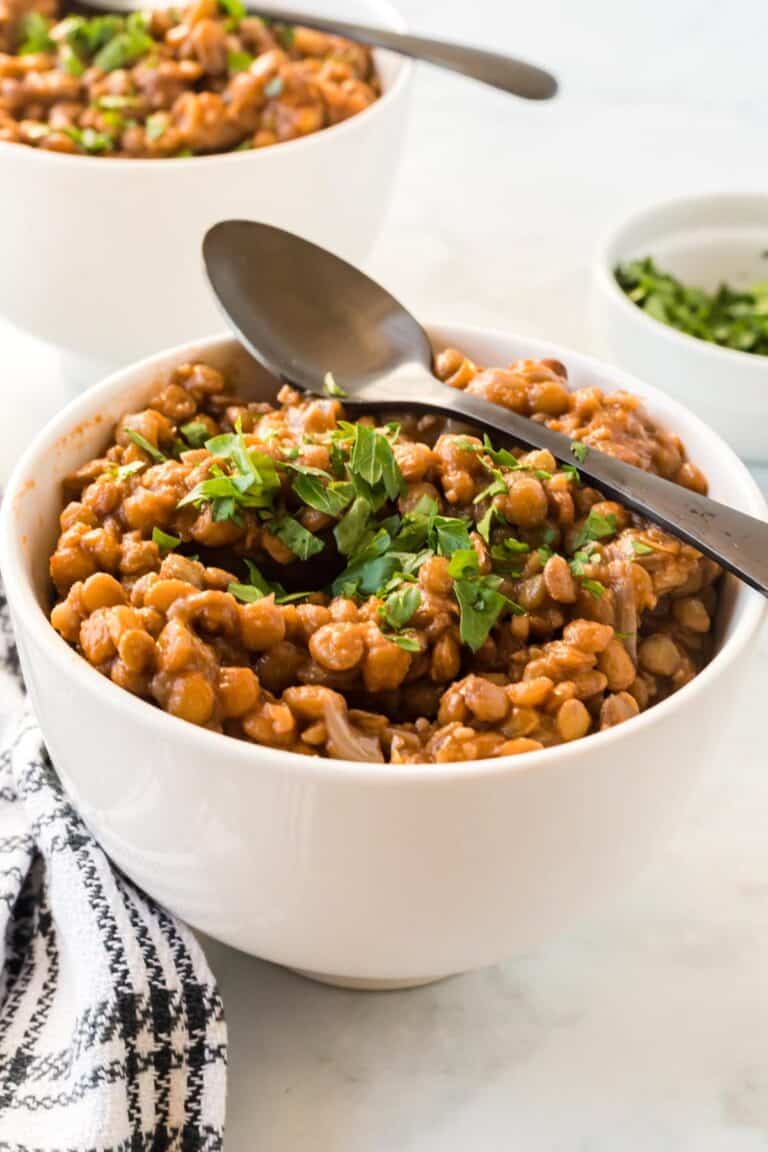
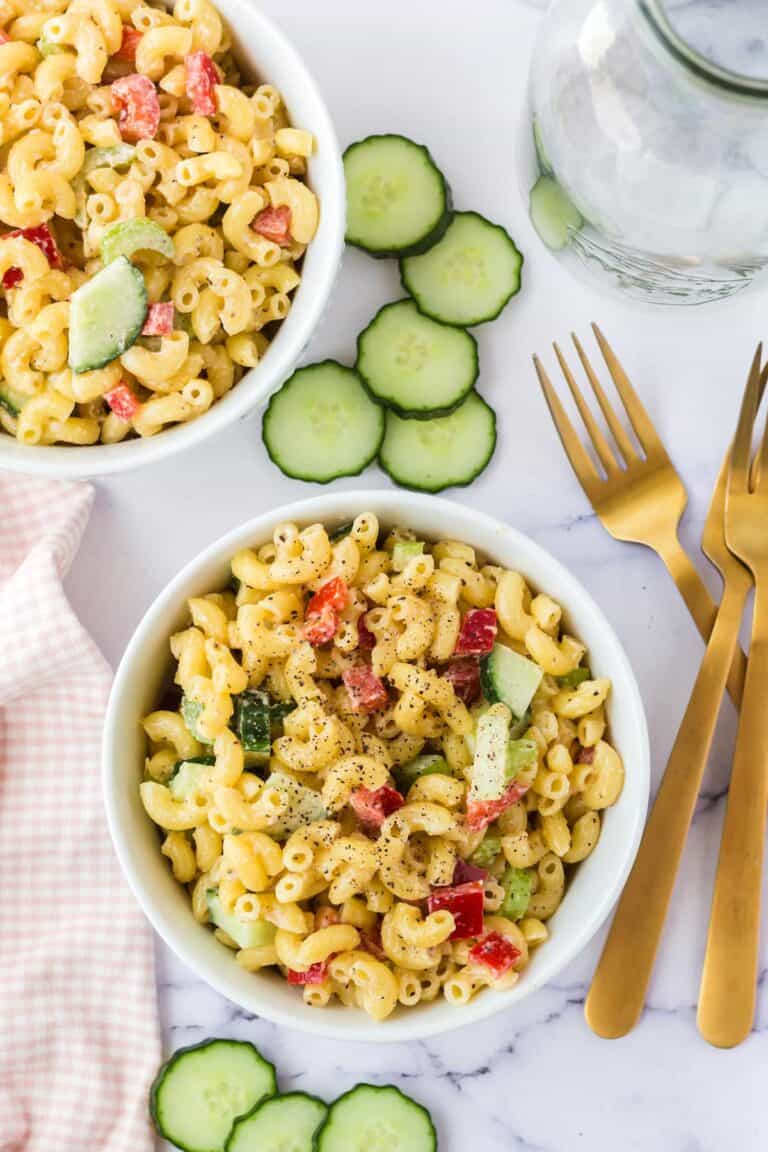

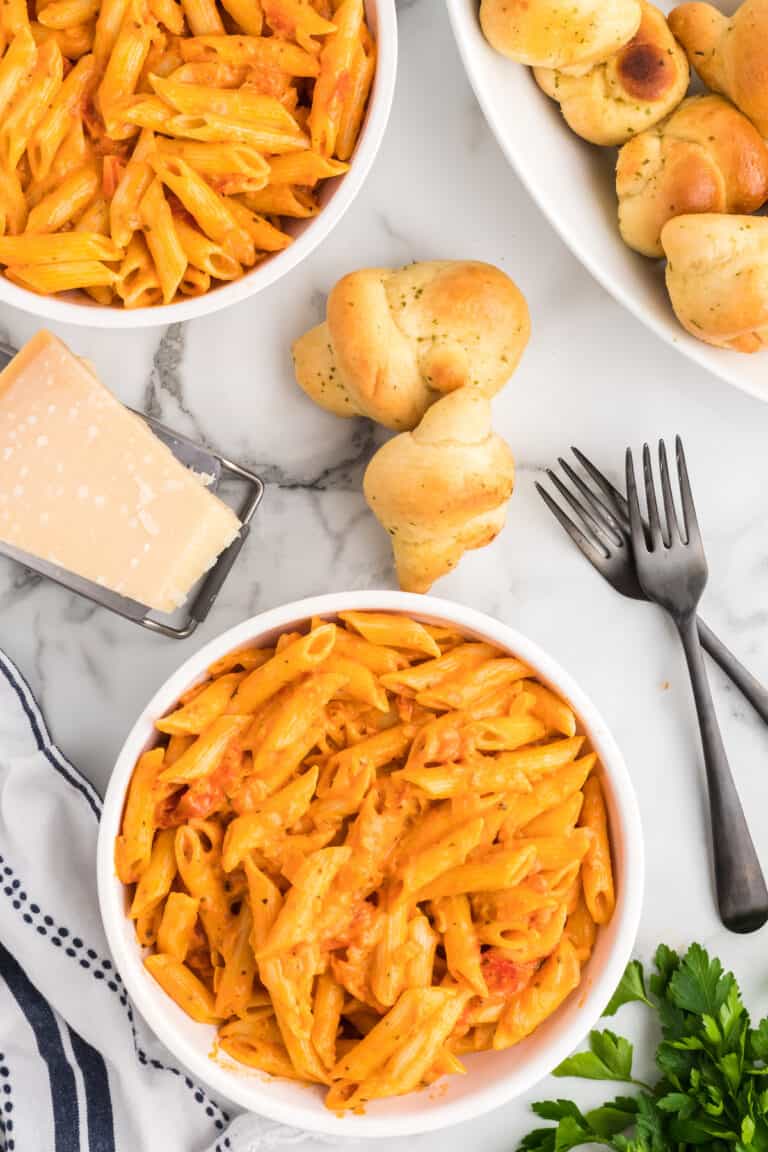
Hi! I am on day 2 and am going to keep the discard for a couple of days to then make something with it. Does the discard need to be left on the counter covered by a cloth too or should I put it it the refrigerator?